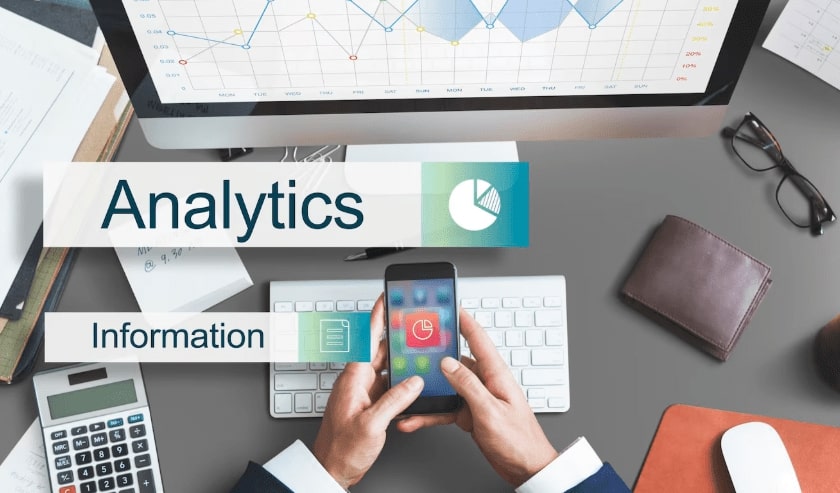understanding how to leverage insights has become a defining factor for success. Businesses that make informed marketing decisions see 23 times higher customer acquisition rates compared to those that depend on intuition alone. This article explores How to use data-driven insights for Marketing Growth, helping you understand how data transforms raw numbers into actionable strategies. Keep reading this guide on the HDM Digital Marketing Agency blog to uncover practical steps that can fuel measurable business growth.

What Are Data-Driven Insights?
In marketing, data-driven insights refer to actionable interpretations of customer, market, and performance data that help shape smarter strategies. Instead of relying on assumptions, businesses can use accurate, evidence-based findings to adjust their campaigns, optimize targeting, and enhance overall results. These insights serve as a compass, pointing brands in the right direction for sustainable data-driven marketing growth.Understanding Customer Behavior Through Data
One of the most powerful aspects of data is its ability to decode customer behavior. From browsing habits on an e-commerce website to interactions on social media, every click generates valuable information. By interpreting these patterns, businesses can create highly personalized experiences that improve engagement and loyalty. Steps to Apply This Insight:- Track website journeys to understand drop-off points.
- Segment audiences based on purchase frequency.
- Use heatmaps to analyze product interest.
- Apply customer feedback to refine marketing messages.
Identifying Market Trends
Spotting emerging trends early allows companies to stay ahead of competitors. Marketing analytics insights make it possible to detect shifts in consumer interests, seasonal demands, and cultural preferences that directly impact buying decisions. By using data for marketing strategy, businesses can proactively adjust product offerings and campaign timing.Improving Decision-Making
Data empowers leaders to make decisions backed by evidence, not guesswork. Whether it’s budget allocation, channel selection, or campaign timing, data-driven insights reduce risks and maximize ROI. To explore more about AI-powered decision-making, check out how to use AI in marketing analytics and learn how new digital marketing trends are reshaping strategies worldwide.Collecting and Analyzing Marketing Data
The foundation of effective marketing insights lies in the systematic collection and analysis of data. From customer relationship management (CRM) systems to ad campaigns, each channel generates crucial metrics that can shape decision-making. Mastering the process of gathering, cleaning, and analyzing this information ensures reliable insights for long-term growth.- Data Sources: CRM, Website, Ads, Social Media: Data sources are the backbone of using data for marketing strategy. CRMs reveal customer journeys, websites provide traffic insights, ads highlight campaign performance, and social media exposes brand sentiment. Combining these sources creates a holistic view of your audience.
- Tools and Technologies for Data Analysis: Modern tools simplify the complexity of data. Platforms like Google Analytics, HubSpot, and AI-powered dashboards allow marketers to process vast information in real time. These technologies enable brands to transition from raw numbers into marketing analytics insights that drive action.
- Metrics That Matter: Not all metrics are equally valuable. The focus should be on KPIs that directly influence growth, such as conversion rate, cost per acquisition, and customer lifetime value. By concentrating on the right metrics, businesses can enhance efficiency and profitability. For example, optimizing organic reach with expert SEO services or maximizing paid ad returns through professional Google Ads services can directly support data-driven marketing growth.

Turning Insights into Actionable Marketing Strategies
Having access to insights is just the first step; the real value lies in transforming them into strategies that drive measurable results. Businesses that understand How to use data-driven insights for Marketing Growth can create campaigns that resonate more deeply with customers, maximize ROI, and stay ahead of the competition.Personalizing Campaigns Based on Data
Personalization is no longer optional; it is expected. Data helps brands segment audiences and deliver tailored messages at the right time. Personalized campaigns boost engagement rates and customer loyalty by addressing individual preferences and needs. Steps to Apply This Insight:- Use purchase history to recommend complementary products.
- Segment newsletters by customer demographics.
- Apply dynamic website content based on visitor behavior.
- Adjust offers to match seasonal or cultural events.
Optimizing PPC and SEO Campaigns
Marketing analytics insights are vital for improving paid and organic campaigns. By monitoring search behaviors and ad performance, companies can refine keywords, landing pages, and bidding strategies. For instance, businesses can leverage insights from using data for marketing strategy to refine both PPC, SEO and Web Design Services efforts simultaneously. For deeper knowledge, explore how AI improves paid campaigns in your complete guide to AI-optimized PPC campaigns, learn practical tactics through Google Ads for ecommerce, and discover how professional advertising can strengthen conversion rates.Tracking Performance and Adjusting Strategies
A campaign is only as effective as the monitoring behind it. Tracking metrics in real time allows brands to respond quickly to changes in consumer behavior or market conditions. Adjustments based on data ensure consistent performance improvement and sustainable data-driven marketing growth.Common Challenges and How to Overcome Them
While data offers countless opportunities, businesses often face barriers in implementing a successful strategy. From data quality to integration, understanding these challenges helps marketers build more resilient frameworks for growth.- Data Quality Issues: Poor data quality leads to poor decisions. Inconsistent, incomplete, or outdated information can derail campaigns and reduce trust in analytics. Businesses must invest in tools and processes that validate, clean, and update their databases regularly.
- Integration Across Platforms: Data often comes from multiple sources; CRMs, websites, ads, and social media. Without proper integration, it is difficult to form a complete picture. Using unified dashboards and automated pipelines ensures smooth synchronization and avoids silos that slow down decision-making.
- Team Skills and Expertise: Even with advanced tools, data is only valuable when interpreted correctly. Many companies lack in-house expertise to convert analytics into action. Upskilling teams or collaborating with external experts can bridge this gap. For example, keeping pace with digital marketing trends for B2B companies in 2025 and leveraging trusted Google Ads services can help overcome skill shortages and ensure optimal use of insights.
Future of Data-Driven Marketing
The future of marketing lies in smarter, faster, and more personalized use of data. As technology advances, businesses will rely even more on predictive tools, AI, and automation to create experiences that adapt to customer needs in real time. Knowing How to use data-driven insights for Marketing Growth will be the ultimate advantage in a competitive digital economy.- Predictive Analytics and AI: Predictive analytics uses historical data and machine learning to forecast customer behaviors and market trends. With AI, marketers can anticipate future buying patterns, plan inventory, and design campaigns that resonate before the trend peaks. For example, UAE e-commerce brands can prepare for seasonal surges like Eid shopping weeks in advance by leveraging predictive tools.
- Real-Time Marketing Decisions: Speed matters. Real-time insights help businesses adjust campaigns instantly based on user activity. Whether it’s changing ad creatives during a live event or sending personalized offers while customers browse, instant decisions create higher engagement and conversions.
- Continuous Optimization: Data-driven marketing never stops. Continuous monitoring and testing allow brands to refine strategies and maximize ROI. From improving ad placements to adjusting SEO keywords, optimization ensures long-term, sustainable growth. To explore practical methods, check resources like how to boost PPC conversion rates and figure it out.
Conclusion: Leveraging Data for Marketing Growth
Data is the fuel of modern marketing. By applying insights from analytics, businesses can make smarter choices, personalize customer journeys, and achieve measurable results. The benefits are clear: better targeting, higher conversions, and faster growth. This is the essence of How to use data-driven insights for Marketing Growth. At HDM UAE, we specialize in turning insights into action. Whether you need expert Google Ads Services, tailored SEO Services or user-focused Web Design Services, our team is here to help you achieve data-driven marketing growth. Contact us today at +971 56 26 01 368 or fill out our consultation request form to connect with our digital marketing specialists. Frquently Asked Questions (FAQs)- What industries benefit most from data-driven marketing? Almost all industries can benefit, but retail, e-commerce, hospitality, and financial services see the fastest growth due to high customer interaction and measurable transactions.
- How can small businesses start using data-driven insights? Start small by using free tools like Google Analytics and social media insights. These platforms provide enough data to identify audience behavior and refine strategies step by step.
- Is there a risk of relying too much on data? Yes. While data provides clarity, over-reliance may limit creativity. A balance between insights and innovative ideas ensures stronger campaigns.
- How often should businesses update their data strategies? Data strategies should be reviewed quarterly to ensure alignment with evolving customer behaviors, market trends, and new technologies.
- What’s the difference between data-driven insights and raw data? Raw data is unprocessed information, while data-driven insights are actionable conclusions drawn from analyzing that data to support better marketing decisions.




